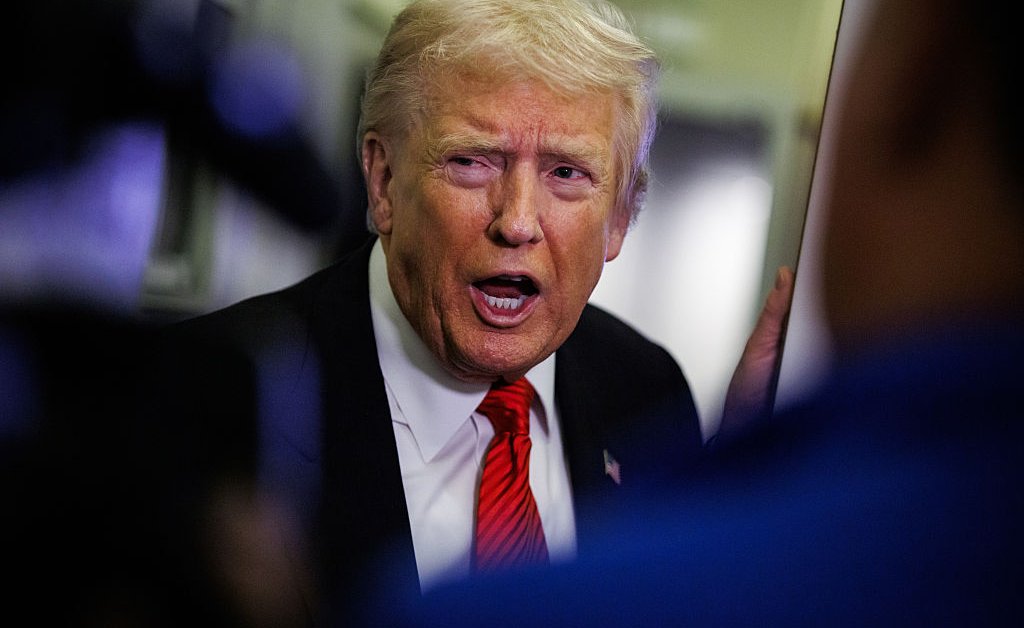Amid the U.S. government shutdown, which has stretched into its second month, President Donald Trump is ramping up the pressure on Republicans to abolish the Senate filibuster—an action commonly known as the “nuclear option” when it comes to changing Senate rules.
“Terminate the filibuster, not just for the shutdown, but for everything else. We will get all of our common sense policies approved and Make America Great Again,” Trump urged via Truth Social on Sunday evening.
The President went on to claim that Democrats “would do it immediately, as soon as they get a chance,” and implored that the Republican Party, which currently holds the Senate majority, does it first.
With the blame game continuing, the Republicans and Democrats remain locked in a bitter stalemate over spending matters and health care items. The Democratic Party’s core demand is that Affordable Care Act subsidies, set to expire at the end of the year, should be extended.
The filibuster has played its part in stalling the passing of the Republican funding bill, as the filibuster rule mandates that 60 Senate votes are needed for most legislation. While the Republicans hold the majority in the Senate with 53 out of the 100 seats, it still leaves them needing some votes from Democrats to push through legislation, such as the GOP spending package.
“It is now time for the Republicans to play their “Trump card,” and go for what is called the Nuclear Option. Get rid of the filibuster, and get rid of it, now!” Trump said on Friday, amid increasing pressure for the government shutdown to end, especially as Americans grow concerned over impacted SNAP benefits and other related knock-on effects.
Here’s what you need to know about filibusters, and how the long-standing Senate tradition is affecting the ongoing government shutdown.
What is a filibuster?
A filibuster is an attempt to delay, or block entirely, a vote on legislation or a confirmation.
It often sees a member of the Senate speaking for a prolonged period of time in order to stall the passing of legislation, a practice which has been used in the Upper House of the U.S. government since its first session in 1789.
Filibusters became more frequent in the late 19th and early 20th centuries, prompting debates about potentially changing Senate rules to curtail the practice. President Woodrow Wilson enacted the Cloture Rule in 1917, requiring a two-thirds majority vote to pass legislation and prevent prolonged speeches from halting debate.
Since then, the number of votes required to pass legislation has been reduced to 60, the threshold still required today. But this hasn’t stopped performative filibusters to voice opposition on policy.
Former South Carolina Republican Sen. Strom Thurmond filibustered for 24 hours and 18 minutes in 1957 in opposition to the Civil Rights Act. More recently, in April, Democratic Sen. Cory Booker of New Jersey broke the record for the longest filibuster, speaking for 25 hours and 5 minutes in criticism of the Trump Administration.
The filibuster has long been utilized by both sides. It’s the primary reason Republican President George W. Bush was unable to enact his immigration overhaul and why Democratic President Barack Obama was unable to enact his climate change legislation.
What has Trump said about filibusters?
Trump has repeatedly called for filibusters to be scrapped as he grows increasingly frustrated with the ongoing government shutdown over disagreements regarding health care subsidies.
“We [Republicans] are in power, and if we did what we should be doing, it would immediately end this ridiculous, country destroying ‘shutdown,’” said the President.
He has argued that removing the filibuster would not only end the shutdown but would also allow Republicans to enact policies such as enforcing voter ID.
Trump has also pointed out that Democrats themselves tried and failed to scrap the 60-majority vote during the Biden Administration. They noticeably tried to change the rules to pass voting rights legislation, but were unsuccessful.
How have lawmakers responded to Trump?
Top Republicans have publicly rejected the President’s call to terminate the 60-vote majority rule.
When asked if the filibuster should be removed in order to resolve the government shutdown, Majority Leader of the United States Senate John Thune told reporters: “It’s something that makes the Senate the Senate. Honestly, if we had done that, there’s a whole lot of bad things that could have been done by the other side [Democrats].”
Thune maintained that the filibuster has “protected this country.”
And it seems Thune has not shifted his position, despite Trump’s increased calls to axe the filibuster. “Leader Thune’s position on the importance of the legislative filibuster is unchanged,” Thune’s spokesperson, Ryan Wrasse, on Friday.
Utah Republican Sen. John Curtis has also pushed back against Trump’s request.
“The filibuster forces us to find common ground in the Senate. Power changes hands, but principles shouldn’t. I’m a firm ‘no’ on eliminating it,” said Curtis.
House Speaker Mike Johnson also appears to have defended the continuation of the filibuster practice, telling reporters Friday that “the safeguard in the Senate has always been the filibuster.”
In contrast, Democratic Sen. John Fetterman of Pennsylvania, one of the few from his party to vote in favor of the Republican funding bill amid the shutdown, has argued it would be “appropriate” for Republicans to throw out the filibuster, but only in cases of the government shutting down.
“I would remind all of us, the Democrats, we wanted to nuke the entire filibuster,” Fetterman said in an interview with Fox News on Oct. 25. “I’m referring to carving out this specific, right now. I’m not talking about eliminating the entire filibuster.”
The post What Is a Filibuster and Why Does Trump Want to ‘Terminate’ It? appeared first on TIME.




